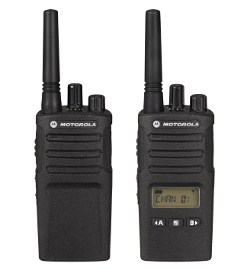Sprint Nextel will cease operation of their push-to-talk iDEN network June 30th, 2013. According to a company press release May 1, the last full day of service is June 29. The shut down process will commence through the day on Sunday, June 30 as Sprint de-activates the system.
IDEN, or Integrated Digital Enhanced Network , is a trunked radio system operating in the 800 MHz Special Mobile Radio (SMR) band. The system uses Time Division Multipe Access (TDMA) and speech compression technologies and was used by Sprint Nextel to provide half-duplex push-to-talk trunked two-way radio services on its cell phones. Sprint first announced it would end iDen service May 29, 2012 as part of its plan to migrate the push-to-talk service from GSM to CDMA.
No doubt this will be a disruption to at least a few of the one million or so Nextel business customers who still use the old iDEN network and rely heavily on the instant walkie-talkie dispatch capabilities of phones that currently operate on iDen. It's not just the hassle of migrating from one phone system to another that can make such a move problematic, it's also the cost.
It could be quite an expensive proposition to migrate a company's entire workforce to new devices that operate on Sprint's new CDMA based Direct Connect network. Cell phones aren't cheap, especially units with a PTT radio feature. That's just the initial migration.
Then there are the monthly fees. Cell phones, even those with built-in walkie-talkie functionality all bundled into a service that typically requires a contract, also has a monthly service fee. For small companies with ten to fifty employees, the total cost of migration could add up quickly. For large companies with hundreds or even thousands of employees, it could be staggering.
If a company really needs to outfit their staff with cell phones, then it may very well be an unavoidable expense. However, if the primary purpose for the cell phone is to serve as a trunked radio, there is another option: simply use two way radios.
There are several benefits to doing this, most of them economical. First, the initial purchase cost of a walkie-talkie is comparable to the retail cost of a typical cell phone. Second, the cost of obtaining a license for business frequencies can be competitive with the setup costs of cell service, expecially for a large fleet of phones.
Also, as tough as some of Sprint's new phones are, most business two way radios are designed specifically for extremely rugged working conditions. Some radios are certified as intrinsically safe. These are radios that can be used in potentially hazardous environments, such as near flammable materials or explosives.
Of course, the obvious advantage is that there are no recurring or monthly usage fees. Once the radios are purchased and the frequencies licensed, the airwaves are essentially free. There are no limited talk and text plans, no roaming charges and no overage fees. Once your radio network is in place, you're done.
There is one more benefit that is often overlooked. The issue of planned obsolescence. It is no secret why cell phone carriers sell two year agreements. That is the life cycle of the typical cell phone. This keeps everyone upgrading and renewing their contracts or entering into new ones, thus perpetually locking a company in to a service and its constant fees.
The average life span of a typical business two way radio is five to seven years. Some may last considerably longer. Business frequency licenses are valid for ten years. Imagine, up to ten years of service without recurring monthly fees. That seems like a millenium in the cell phone industry!
It is this sort of obsolescence that is now forcing a million iDEN fans who have hung onto their old PTT Nextel phones through thick and thin to make an uncomfortable and expensive move to a whole new system. However, there is another, possibly smarter option.
Nextel iDEN business customers who are facing an expensive a migration may want to consider this before moving forward on such an upgrade.








